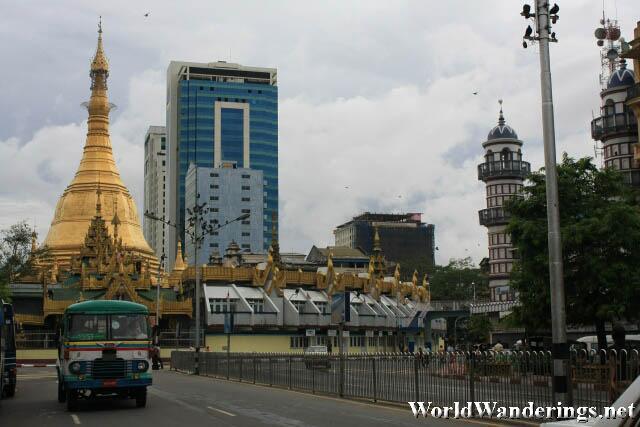Right at the heart of downtown Yangon is the Sule Pagoda or Paya. This pagoda sits on a rotunda where a lot of traffic passes by. The British who organized the layout of Yangon made Sule Paya the center of the city. This is also where most of the colonial buildings were built. It is said that the Sule Paya precedes the Shwedagon Paya and interestingly, the nat spirit which was said to reside in the the Sule Paya pointed out the location where the Shwedagon Paya is supposed to be built.
The Sule Paya itself is not really that inspiring, however it has been a popular meeting point for various activities mostly by activists. Several demonstrations and eventual crackdowns were all conducted in the vicinity of the Sule Paya. For such a public structure, it surprisingly requires and entrance fee. I didn’t really feel like going in anyway, since it wasn’t so inspiring in the fire place. There seemed to be a lot of people in the area though. Although this may be due to the fact that people are preparing for the Thingyan festivities.
It is natural to have the Sule Paya as your landmark, and I found myself doing just that. Whenever I going around Yangon, I always try to remember where the Sule Paya was and fortunately, I always managed to find it even though it was not that tall. It is also a useful landmark to tell the cab drivers since some of them cannot understand English. At least they can understand Sule Paya and know to bring you there. I would imagine that the Sule Paya area would be full of traffic but because this was the start of the Thingyan festival there were not as many as I expected them to be. I wonder why.
[xmlgm {http://www.worldwanderings.net/kml/SulePaya.kmz}]


